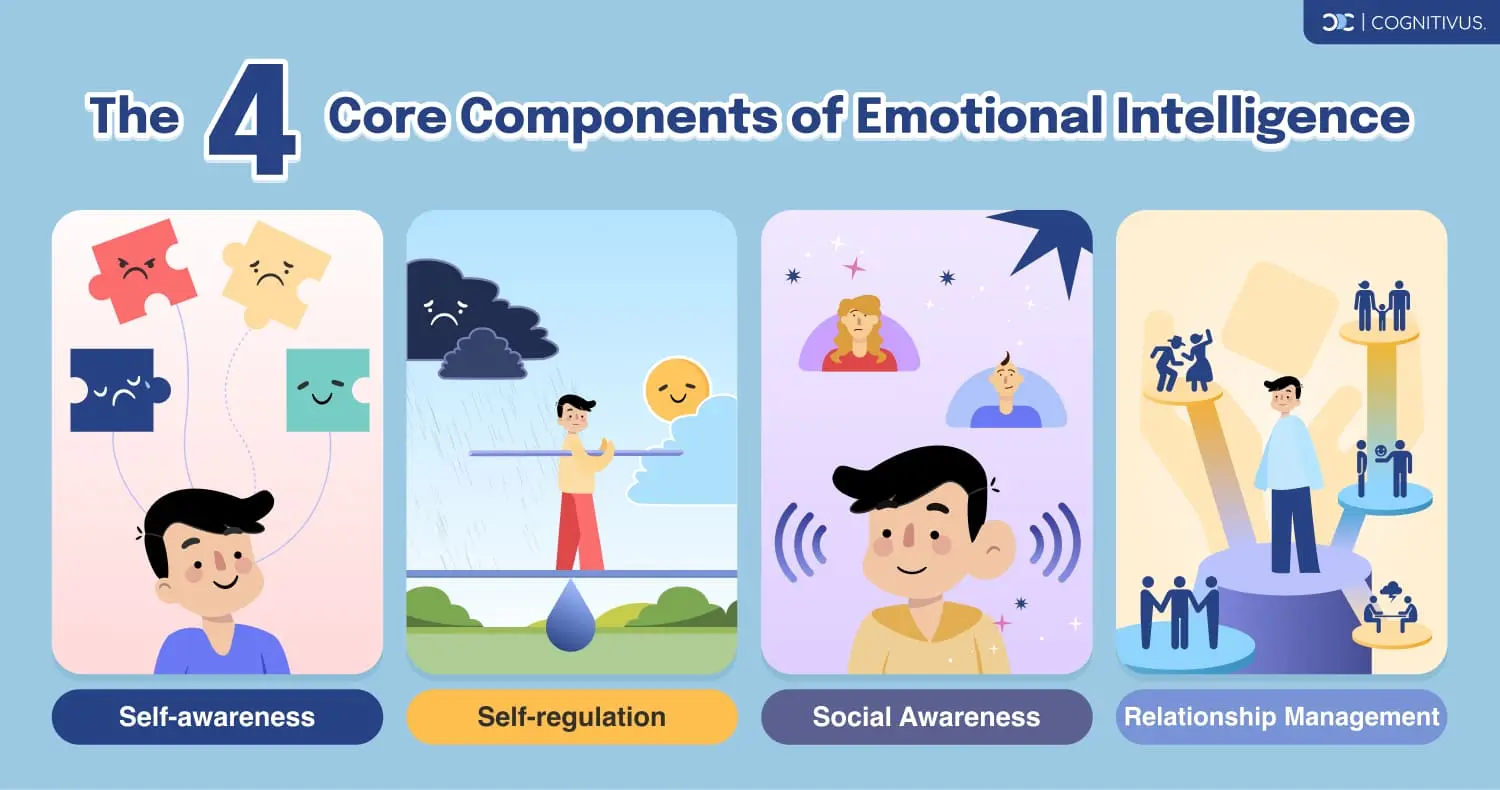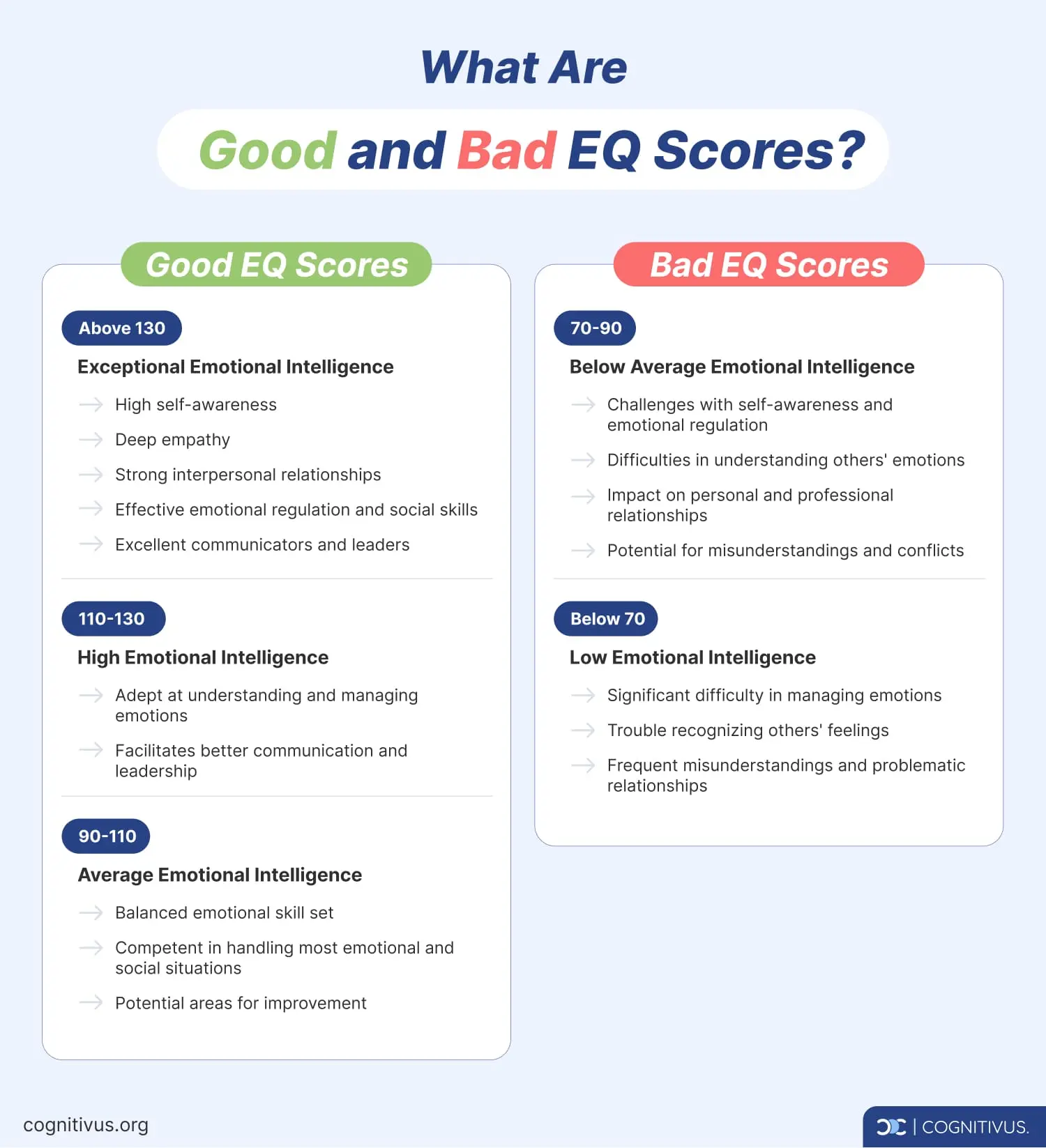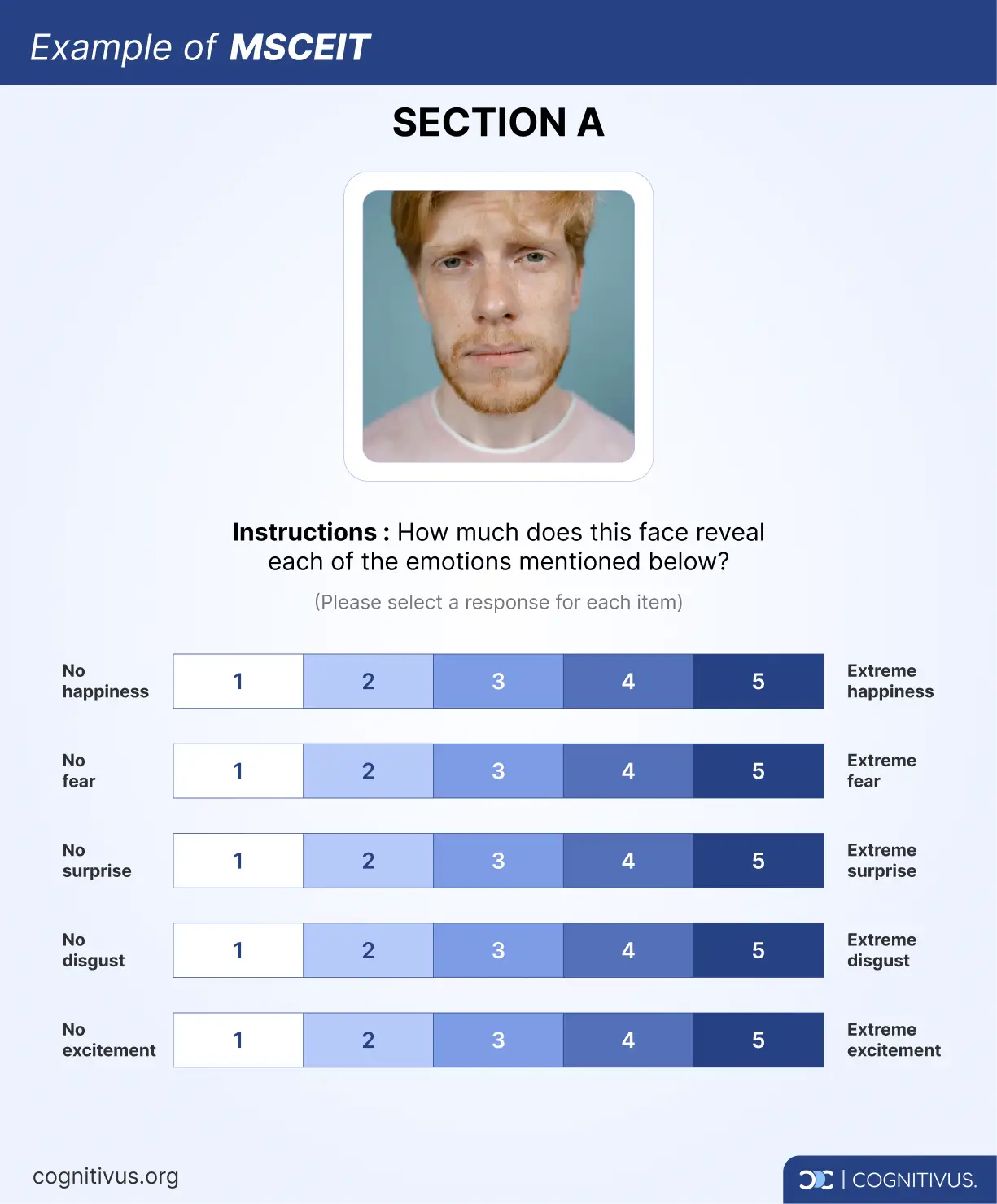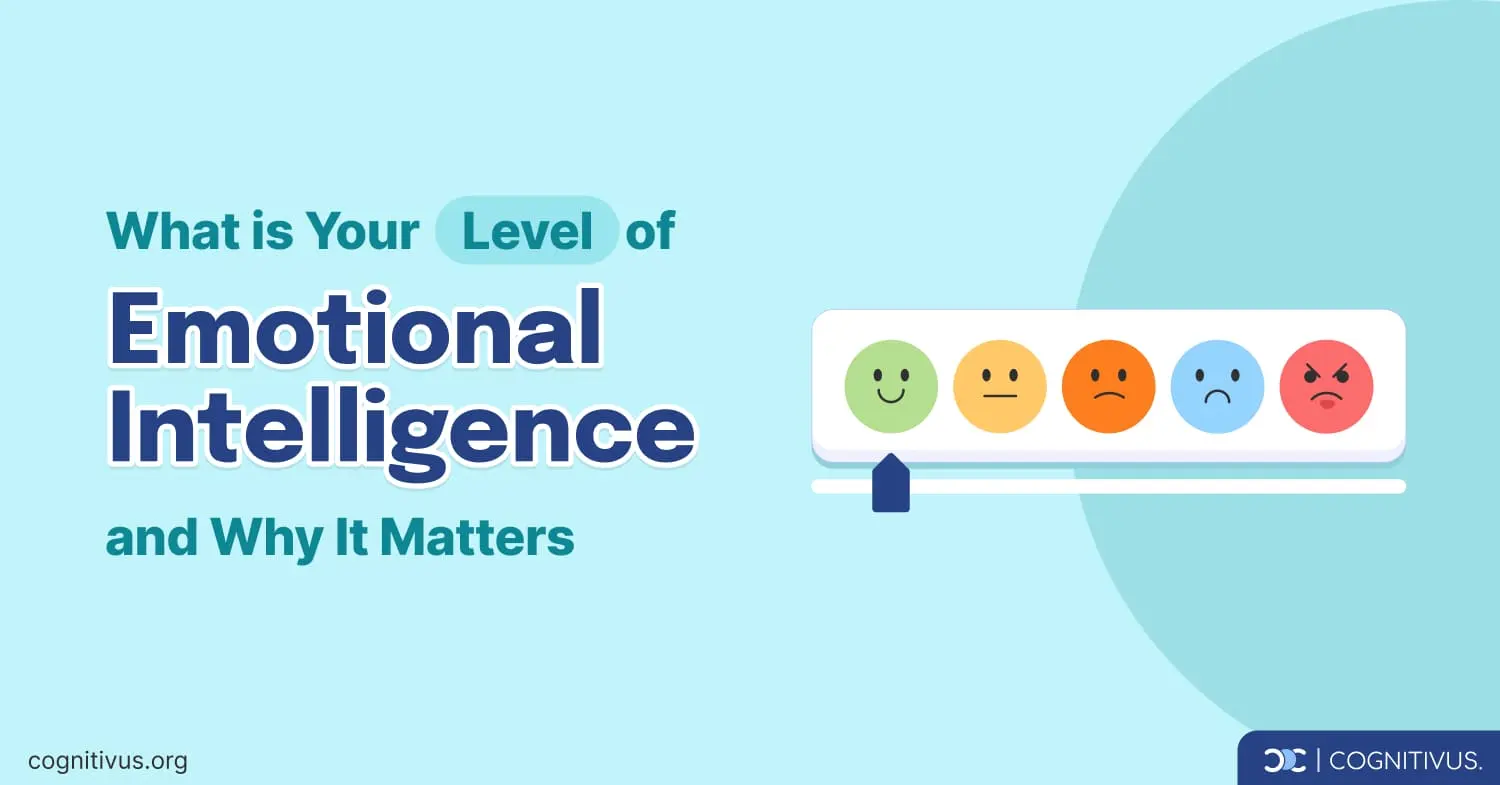Emotional intelligence shapes how we interact with the world. It’s an important skill we use daily, without even realizing it. How you communicate, your ability to form relationships, and understanding how someone else feels are all part of your emotional intelligence.
But how do we gauge something so intimate and complex?
The truth lies in our thoughts and actions.
Only through our responses and interactions with others can we determine how emotionally intelligent we are. Various techniques, from self-reports to professional observation, are among the tools that are used to measure this fascinating ability.
To help you learn more about your emotional intelligence, our guide explores the most commonly used emotional intelligence tests and why they matter, along with tips to improve your own sense of empathy, inner motivation, and resilience.
1. How Emotional Intelligence Can Be Measured
Before we can determine how to measure our emotional intelligence, we have to define it and understand the role it plays in our lives.
Emotional intelligence, or EI, shapes how we interact with the world because it influences our relationships and growth.
American psychologist Daniel Goleman states that emotional intelligence is a set of skills or competencies that allow us to adapt, become good leaders, and manage conflict. These skill sets also help us cope with our emotions so we can become better leaders, partners, and people in general.
The next question is: how do we measure a feeling? It might seem complex and even challenging to measure emotional states, but several tools and assessments are designed to help us gauge EI effectively. More specifically, these tools and assessments can help us understand our emotions and how they influence our behavior and interactions with others.
Upon completing these assessments, you will receive a score called EQ. Emotional intelligence (EI) and emotional quotient (EQ) are essentially the same, with EQ being the term used to quantify and measure EI.
Now, let’s go through 5 ways to measure emotional intelligence:
1.1. Self-report questionnaires
Self-report questionnaires require people to rate their own emotional abilities. Participants answer a series of questions about their emotional responses and behaviors. These questionnaires typically ask how frequently or intensely they experience certain emotions, how they react to different situations, and how well they perceive themselves managing their emotions.
The Schutte Self Report Emotional Intelligence Test (SSEIT) is one such assessment that uses a scale of 1 (strongly disagree) to 5 (strongly agree) to indicate which item best applies to you. It measures emotional intelligence across the four subscales of emotional self-regulation, managing others’ emotions, emotional perception, and how you utilize emotion.
- Examples:
- Pros:
- Easy to administer and complete
- Can be done online, making it accessible
- Provides a detailed profile of emotional strengths and weaknesses
- Cons:
- Can be influenced by the individual's self-perception and honesty
- May be affected by social desirability bias (people answering in a way they think is socially acceptable)
1.2. Ability tests
Ability tests assess how well people can perform tasks and solve problems related to emotional intelligence. These tests involve real-life scenarios where participants must identify emotions in others, demonstrate how to manage emotions in themselves, and use emotional information to guide their thinking and behavior. For example, you might have to explain how a disgruntled employee would respond to a sudden increase in their workload.
The advantage of using an ability test to assess emotional intelligence is that it measures actual emotional skills rather than self-perceived abilities, making them more objective.
- Example:
- Mayer-Salovey-Caruso Emotional Intelligence Tests (MSCEIT) (Mayer et al., 2002a,b)
- Pros:
- Measures actual emotional skills rather than self-perceived abilities
- Provides objective data on how well people can understand and manage emotions
- Cons:
- More time-consuming and complex to administer
- Requires interpretation by trained professionals
1.3. 360-Degree feedback
360-degree feedback involves gathering insights from an individual's peers, supervisors, and subordinates. This method provides an overview of how others perceive an individual’s emotional intelligence. It consists of surveys or interviews that ask colleagues to rate the individual's emotional competencies and provide examples of their emotional behavior in the workplace.
Also known as multi-rater feedback, once the report is completed, the responses are compared to the individual’s self-perception of their emotional skills. The purpose of this assessment is to identify where and how individuals can improve their competencies and behaviors.
- Example:
- Emotional and Social Competence Inventory (ESCI) (Boyatzis and Goleman, 2007)
- Pros:
- Offers a comprehensive view by including feedback from peers, supervisors, and subordinates
- Highlights how an individual's emotional intelligence is perceived by others
- Cons:
- Can be influenced by the biases and perspectives of the raters
- Requires a trusting and open environment for honest feedback
1.4. Performance-based tests
Performance-based tests involve tasks where people must demonstrate their emotional intelligence in real time. These tests can include role-playing scenarios, problem-solving exercises, and interactive activities that require emotional regulation and interpersonal skills. Test-takers are presented with a list of emotions and are meant to pick the one that best suits the scenario.
- Examples:
- Pros:
- Provides a realistic assessment of emotional intelligence in action
- Can reveal strengths and weaknesses in practical applications
- Cons:
- May require significant time and resources to administer
- Can be stressful for participants, potentially affecting performance
1.5. Behavioral observations
Behavioral observations involve trained professionals who carefully observe individuals in various situations to assess their emotional intelligence. This method can be used in real-life settings or simulated environments to see how individuals manage their emotions and interact with others.
Behavioral observation is often used to assess EI in the workplace. If the company has a leadership program, experienced observers will identify how team or project leaders interact with their colleagues. They’ll look at how these individuals adapt to different situations, whether they’re emotionally flexible, and how they motivate their team.
- Pros:
- Provides insight into how emotional intelligence is demonstrated in real-world situations
- Can be tailored to specific contexts and environments
- Cons:
- Requires skilled observers and can be time-consuming
- May be influenced by observer bias
2. Understanding Emotional Intelligence
When emotional intelligence first gained attention in 1995, it filled a critical gap in understanding why people with average IQs often outperform those with higher IQs. This discovery revealed that emotional intelligence is a significant factor in personal and professional success, as people with high EI are better at managing their emotions, navigating social complexities, and making effective decisions.
Because EI is a skill set that consists of many competencies, such as empathy and conflict resolution, we have to break it down into its four domains or pillars to better understand how we apply emotional intelligence in our personal and professional lives.
The four pillars of emotional intelligence
It was American psychologist Daniel Goleman who first popularized the concept of emotional intelligence. Goleman’s theory states that emotional intelligence is built on four key pillars: self-awareness, self-management, social awareness, and relationship management. Each domain works together to help you navigate stressful situations by regulating your emotions and respecting how others feel. These factors have a major influence on your thought patterns, behavior, and communication.
Let’s take a closer look at each of these pillars below:

- Self-Awareness: This essential pillar of emotional intelligence means you can recognize and understand your own emotions and their impact on your thoughts and actions.
- Self-Management: This pillar involves the ability to control your emotions and adapt to changing circumstances.
- Social Awareness: When you’re socially aware, you can understand and empathize with the emotions of others.
- Relationship Management: This skill helps you manage interactions and maintain positive relationships.
So, how do you know whether you’ve mastered the four pillars of emotional intelligence in your own life?
Well, think about this: emotionally intelligent people usually have a strong sense of self-awareness. However, studies such as the one published by Tasha Eurich in Harvard Business Review indicate that most people view themselves as self-aware, yet only a few actually are.
This gap certainly highlights the need for honest self-reflection. Furthermore, it requires openness to receive feedback to help us understand and develop our own levels of emotional intelligence.
But, before we can make positive changes to strengthen our emotional intelligence, we’ve got to determine the difference between our EQ, IQ, and personality.
EI vs. IQ and personality
Over the last few years, EI has become a prized skill set in the workplace and beyond. Ultimately, EI is favored over IQ (Intelligence Quotient), which measures intellectual abilities, and personality, which includes enduring traits such as agreeableness and extroversion.
IQ remains more or less stable throughout life, although this fact has been debated, whereas emotional intelligence can be improved and developed with practice. This flexibility makes EI a valuable skill for anyone looking to enhance their personal and professional effectiveness.
How emotional intelligence impacts performance at work
If emotional intelligence facilitates understanding, communication, and leadership, there’s no doubt that it has a profound impact on workplace performance. Studies indicate that emotional intelligence is the strongest predictor of performance, explaining 58% of success across various job roles.
This is better understood by looking back at some of the four pillars of emotional intelligence. The first pillar of self-management helps us adapt to change, set goals, and recover from failures. Self-awareness is another pillar that allows us to realize that anything is possible if we put our minds to it and sparks the desire to continue to learn and grow.

Ultimately, EI shapes and motivates us, benefiting employees and leaders.
For employees
According to research, emotionally intelligent employees perform better and typically earn more than their lower EI counterparts.
Based on an EI and Leadership Guide by Forbes, each point increase in emotional intelligence can add $1,300 to an annual salary. This highlights the direct link between emotional intelligence and reaching financial success.
It’s no wonder employers also prefer hiring people with high EQ. What’s even more astonishing is that 71% of employers prioritize emotional intelligence over IQ. They know that employees with high EI are more adaptable, better at relationship management, and excel in leadership roles.
For leaders
If there’s one quality that every leader should possess, it’s an exceptional level of emotional intelligence. That’s because leaders with a high EQ are capable of guiding teams with empathy. Understanding how someone else feels allows them to cultivate a positive work environment that boosts productivity.
It was Harvard Business School Online that stated that technical skills alone do not guarantee leadership success. Emotional intelligence is essential for coaching teams, managing stress, delivering feedback, and collaborating.
Here’s why leaders with high EI are so important in the workplace:
- They can communicate effectively and resolve conflicts while respecting differences in opinions.
- They create a trusting and collaborative work culture because they’re attuned to the emotional needs of others.
- They can navigate social complexities and maintain positive relationships.
4. Signs of high and low emotional intelligence
If you’re thinking about taking an emotional intelligence test, whether out of curiosity or as part of a professional assessment, the following signs can give you a rough idea about your overall EI:

Signs of high emotional intelligence:
Self-awareness
When you have a high EQ, you can recognize and understand your emotions, including the impact they have on your thoughts and actions. Having self-awareness is about identifying your strengths and weaknesses and having a willingness to learn and grow.
Self-regulation
If you are capable of controlling your emotions and adapting to change, you probably have good self-management or self-regulation skills. High-EQ individuals can overcome negative experiences and emotions because they can modify their approach depending on the situation.
Empathy
Empathy is part of the foundation of emotional intelligence. If you can’t see a situation from another person’s perspective and you struggle to understand their emotions, it’s hard to connect with them. People with high EQ rely on empathy to form lasting relationships, both personally and professionally.
Social skills
As a high EQ individual, you’re equipped to handle social complexities with ease. You take steps to maintain healthy relationships and work through conflicts effectively. Your sense of social awareness allows you to quickly interpret body language cues to guide conversations and determine whether someone is interested in you.
Signs of low emotional intelligence:
Poor self-awareness
Low EI individuals often lack insight into their own emotions and the impact their reactions and behaviors have on others.
Emotional reactivity
If you struggle to control your emotions and find yourself acting impulsively, it’s a sign of poor emotional reactivity found in individuals with low emotional intelligence.
Lack of empathy
You might be struggling with emotional intelligence if you find it hard to understand and relate to the emotions of others.
Social difficulties
When you notice that interacting socially feels like a constant uphill battle because it constantly leads to conflict and poor relationships, it’s a sure sign that you need to work on improving your emotional intelligence.
3. What Are Good and Bad EQ Scores?
EQ scores that you obtain from an emotional intelligence assessment are divided into ranges indicative of different levels of emotional skills. It’s important to note that the interpretation of these scores depends on the specific EI test being used, as different tests have their own scoring systems and interpretations.Al
Generally, higher scores reflect better emotional and social functioning, while lower scores highlight areas for potential improvement. Note that it’s entirely possible to have a high IQ combined with a low EQ, and vice-versa.
Here’s a general guide to understanding what constitutes good and bad EQ scores across various assessments:
 Good EQ scores indicate high self-awareness and empathy; bad EQ scores reveal difficulties in managing emotions and relationships / Illustration by © Cognitivus
Good EQ scores indicate high self-awareness and empathy; bad EQ scores reveal difficulties in managing emotions and relationships / Illustration by © CognitivusGood EQ scores
- Above 130: Exceptional Emotional Intelligence
An EQ above 130 demonstrates high self-awareness, a deep sense of empathy, and strong interpersonal relationships. People with such EQ excel in emotional regulation and social skills, making them effective communicators and leaders. - 110-130: High Emotional Intelligence
EQ scores between 110 and 130 indicate that you are adept at understanding and managing your own emotions and those of others. This makes communication and leadership easier. - 90-110: Average Emotional Intelligence
Most people score within this range, indicating a balanced emotional skill set. If that’s your case, this means that you can handle most emotional and social situations competently, though there might be areas for improvement.
Bad EQ scores
- 70-90: Below Average Emotional Intelligence
EQ scores between 70 and 90 suggest challenges with self-awareness, emotional regulation, and understanding others' emotions. These difficulties can impact personal and professional relationships. They may lead to misunderstandings and ongoing conflicts. - Below 70: Low Emotional Intelligence
EQ scores below 70 reveal that the person has significant difficulty managing emotions, recognizing others' feelings, and navigating social interactions. If you have a low EQ score, you may experience frequent misunderstandings and troublesome relationships, whether in your private or work lives.
Specific EQ tests and their scoring
To understand where EQ (Emotional Quotient) scores come from, let's look at different tests and their scoring systems:
- Mayer-Salovey-Caruso Emotional Intelligence Test (MSCEIT™):
The MSCEIT is an ability-based test that measures emotional intelligence. It comes from the Multifactor Emotional Intelligence Scale (MEIS). The test has 141 questions and usually takes 30-45 minutes to complete. It provides 15 main scores and three supplemental scores. The average score is 100, with scores above 115 considered high and below 85 considered low.

- Bar-On Emotional Quotient Inventory (EQ-i):
The EQ-i 2.0 and EQ-360 assess emotional and social intelligence based on the so-called Bar-On Model. The EQ-i 2.0 is a self-report measure, meaning you fill it out yourself. The EQ-360 includes ratings from others to give a more detailed profile. Both tests provide one total score, five composite scores, and 15 subscale scores. These various scores allow you to get detailed insights into various aspects of emotional intelligence. - Trait Emotional Intelligence Questionnaire (TEIQue):
The TEIQue was developed by Professor K. V. Petrides and is part of a research program at University College London (UCL). It's available in over 20 languages and is used for both research and commercial purposes. This questionnaire helps measure different traits related to emotional intelligence.
4. How to Improve Your Emotional Intelligence
Perhaps you’ve noticed that your relationships aren’t where you want them to be or that you find social situations overwhelming. These could be signs that you’re not using your emotional intelligence to its fullest potential. Luckily, with practice and dedication, you can enhance this essential skill set.
Let’s see how you may increase your overall emotional intelligence:
Effective exercises to boost emotional intelligence
Improving your emotional intelligence starts with consistency and self-reflection. Here are specific exercises grouped by the core components of emotional intelligence:

Self-awareness
- Journaling: Write about your feelings and the events that trigger them to understand your emotional responses.
Example: Note how a stressful meeting made you feel and reflect on why you felt that way. - Mindfulness and meditation: Spend a few minutes each day focusing on your breathing and observing your thoughts and feelings without judgment.
Example: Use guided meditations to help you stay on track. - Emotion tracking: Keep a log of your emotions throughout the day, noting what triggered each emotion and how you reacted.
Example: Use an app or a simple notebook to track your mood swings and triggers.
Self-management
- Stress management techniques: Practice techniques like counting to ten, changing your environment, or engaging in calming activities.
Example: When feeling stressed, take a five-minute walk or listen to soothing music. - Impulse control: Pause before reacting to strong emotions.
Example: When you receive criticism, take a moment to breathe and think before responding. - Positive affirmations: Use positive self-talk to manage negative emotions.
Example: When feeling overwhelmed, remind yourself of your strengths and past successes.
Social awareness
- Empathy-building activities: Reflect on others' perspectives and engage with characters in literature to broaden your emotional horizons.
Example: When reading a novel, imagine yourself in the characters' shoes and think about their experiences. - Active listening: Listen with the intent to understand, not just to respond.
Example: During conversations, ask clarifying questions and summarize what the speaker said to ensure you understand their emotions and viewpoint. - Perspective taking: Practice seeing situations from others' viewpoints.
Example: During conflicts, try to understand the other person's perspective and emotions before reacting.
Relationship management
- Building social skills: Engage in conversations, participate in group activities, and be open to new social experiences.
Example: Join a club or group related to your interests and practice reading body language during interactions. - Seeking feedback: Ask for feedback about your behavior in various situations.
Example: After a meeting, ask a colleague for their honest opinion on how you handled interactions and emotions. - Conflict resolution: Learn techniques to manage and resolve conflicts effectively.
Example: During disagreements, focus on finding common ground and understanding the other person's feelings and needs. - Team activities: Engage in exercises that promote teamwork and understanding.
Example: Participate in team-building activities that require collaboration and communication.
As you can see, dedicating a few minutes each day to practicing mindfulness, and learning how to become more empathic and self-aware, can create remarkable changes in your life. For more EI-boosting exercises, check out our list of daily habits to increase emotional intelligence.
Emotional intelligence influences the way we think, feel, and behave, both consciously and subconsciously. For these reasons, working on being more emotionally intelligent can help you strengthen your relationships, manage conflict, and become a better person. Not only can you live a more meaningful life, but you can also equip yourself to enrich the lives of others.


